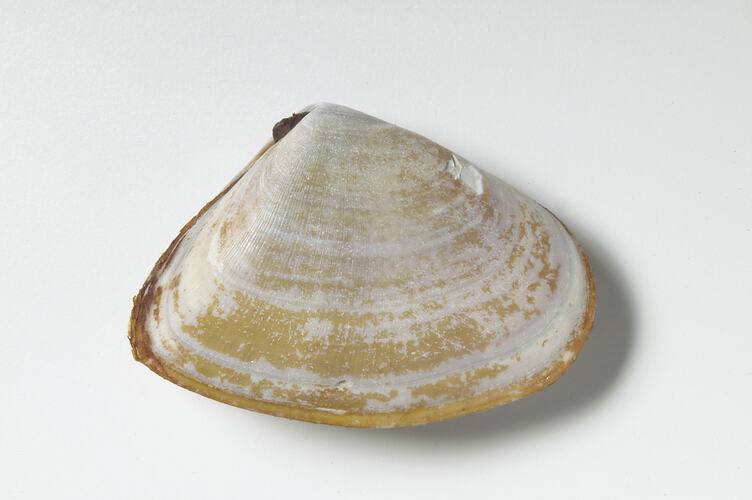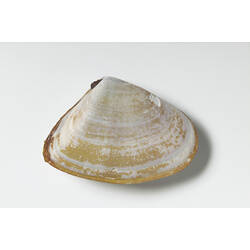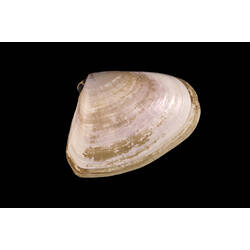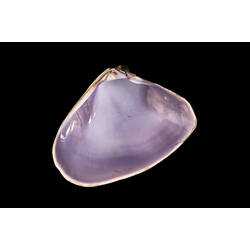General Description
This moderately-sized, solid shell has a distinctive wedge shape with the anterior margin rounded and the posterior side more or less straight. Exterior colour variable from lavender to pink, yellow or green. Interior colour purple or pink. External coating pale yellow, green or brown. Shell up to 6 cm across.
Biology
This species often occurs in large numbers, but populations can be subject to great natural fluctuations in number. They are harvested commercially for both human consumption and bait, and at times have been considered as a potential species for aquaculture. They make shallow burrows, just below the surface of the sand, are suspension feeders and can quickly right themselves if washed around by the surf. They are also known as Goolwa Cockles in South Australia and Eugarie in Queensland.
Distribution
South-eastern and eastern Australia.
Habitat
Exposed sandy beaches, in low intertidal areas.
More Information
-
Animal Type
-
Animal SubType
-
Brief Id
Wedge-shaped, rounded anterior, straight posterior. Inside shell purple-pink.
-
Colours
White, Pink, Green
-
Habitats
-
Diet
Plankton or Particles
-
Endemicity
-
Commercial
Yes
-
Conservation Statuses
CITES: Not listed, FFG Threatened List: Not listed, DSE Advisory List: Not listed, IUCN Red List: Not listed
-
Depths
Shore (0-1 m), Shallow (1-30 m)
-
Water Column Locations
On or near seafloor
-
Taxon Name
-
Scientific Author
Lamarck, 1818
-
Common Name
Pipi
-
Other Names
Eugarie , Goolwa Cockle
-
Phylum
-
Subphylum
-
Class
-
Subclass
-
Order
-
Superfamily
-
Family
-
Genus
-
Subgenus
-
Species Name
deltoides




